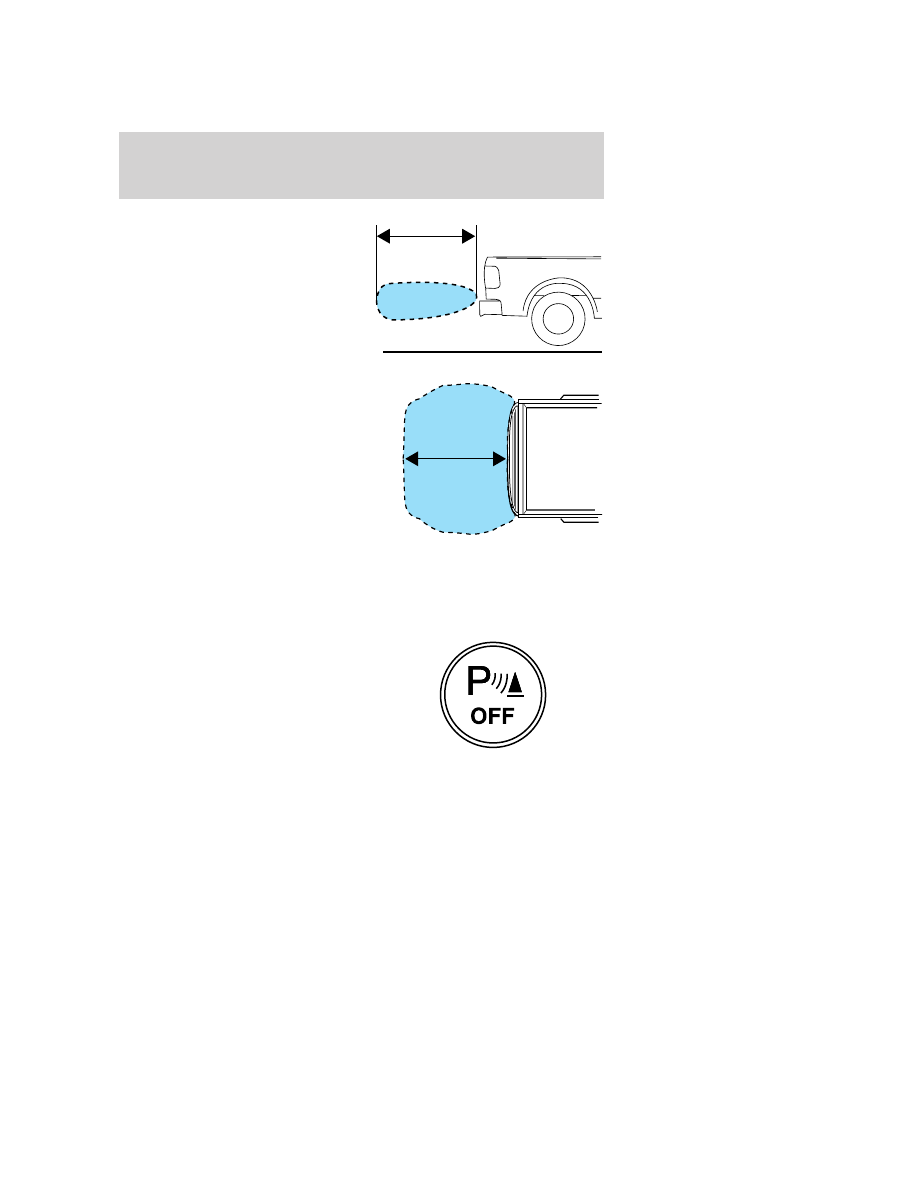Lincoln Mark LT (2008 year). Instruction - part 15

The RSS detects obstacles up to 6 feet
(2 meters) from the rear bumper with
a decreased coverage area at the outer
corners of the bumper, (refer to the
figures for approximate zone coverage
areas). As you move closer to the
obstacle, the rate of the tone increases.
When the obstacle is less than 10
inches (25.0 cm) away, the tone will
sound continuously. If the RSS detects
a stationary or receding object further
than 10 inches (25.0 cm) from the side
of the vehicle, the tone will sound for
only three seconds. Once the system
detects an object approaching, the
tone will sound again.
While receiving a warning the radio
volume may be reduced to a
predetermined level. After the
warning goes away, the radio will
return to the previous volume.
The RSS may have reduced performance or an increased chance of false
detection if the tailgate is not locked and in the upright position. If the
tailgate is down, the RSS tone may be heard intermittently or
continuously. The tone may also be heard if items in the truck bed
protrude rearward outside the bed.
The RSS automatically turns on when
the gearshift lever is placed in R
(Reverse) and the ignition is ON. An
RSS control allows the driver to turn
the RSS on and off. To turn the RSS off,
the ignition must be ON, and the gear
selector in R (Reverse). An indicator
light on the control will illuminate when
the system is turned off. If the indicator light illuminates when the RSS is not
turned off, it may indicate a failure in the RSS. The RSS will remain off until
either the RSS control is pushed again or the ignition switch is recycled.
Keep the RSS sensors (located on the rear bumper/fascia) free
from snow, ice and large accumulations of dirt (do not clean the
sensors with sharp objects). If the sensors are covered, it will
affect the accuracy of the RSS.
2008 Mark LT (mlt)
Owners Guide (post-2002-fmt)
USA (fus)
Driving
225